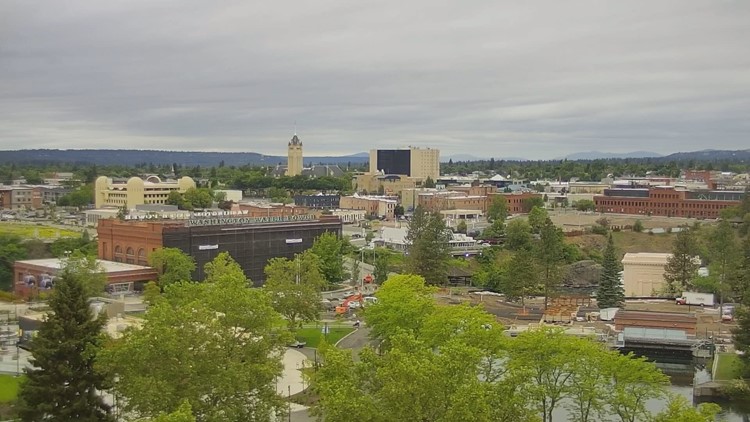SPOKANE, Wash. — Have you noticed a bit more humidity outside lately than what you're used to in the summer time? Our normally arid climate in Spokane has been a bit more humid.
But where is all this extra humidity coming from, and how does it compare to other parts of the U.S.?
Before we dive into that question, you must know that in order to accurately measure humidity, we're going to use a parameter called "dew point" instead of "relative humidity." I covered why dew point is more meaningful measure of humidity in a Weather Classroom a few weeks ago. You can watch it below.
For starters, Thursday's dew point was as high as 54 degrees. For Spokane, anything above 50 is at least a little humid and noticeably high for those that have lived here for a long time. If we hit 60 degrees, which doesn't happen often, you'll notice it immediately as you step outside, no matter if it's the middle of the day or night. Humidity is humidity.
So how do you get higher humidity? Simply put, you need a source of water. Any source will do: oceans, large bodies of water, recent rains, snow melt, even vegetation can provide water vapor that results in humidity.
The Pacific Ocean is our main source of moisture. However, there's two limiting factors that prevent high humidity for Spokane. First, the eastern Pacific waters are cold, so there's only so much water vapor the air can hold as a result, and second, the mountains that surround up on all sides will squeeze out moisture as the air passes over them. This leads the Columbia Basin to be a rather arid climate.
This is evident in more extreme cases, like Death Valley. When surrounded by mountains by all sides, that cases the air to be dry and hot, or a desert climate.
The eastern two-thirds of the U.S. have a much, much better source for water vapor and humidity - the Gulf of Mexico.
The very warm waters of the Gulf of Mexico provide high levels of humidity for the South, Midwest, and East Coast of the U.S. Dew points during the late Spring and Summer season are almost always above 60 degrees and frequently above 70!
Myself, I've experienced the dew point above 80 degrees four times in my life, all while living in the Midwest. At that level of humidity, the atmosphere is comprised of about 4% water vapor. The air you breath is 4% water! That's why extremely humid air feels so thin, because the water vapor is displacing a bit of oxygen.
So while, yes, it is more humid than normal in Spokane today, just note that we live in a part of the country that is among the driest. Our friends out east would gladly take some our our "dry" air any day in the summer, even if it does feel a bit humid for our skin.



